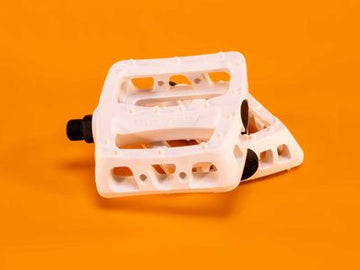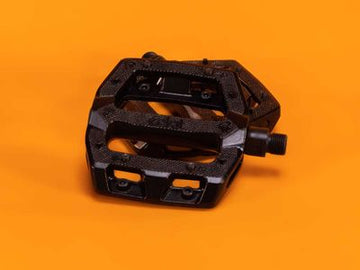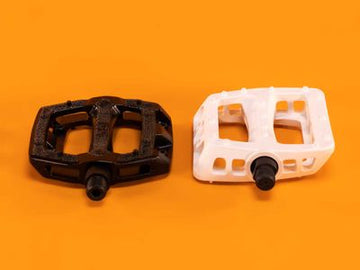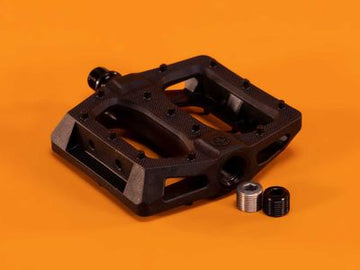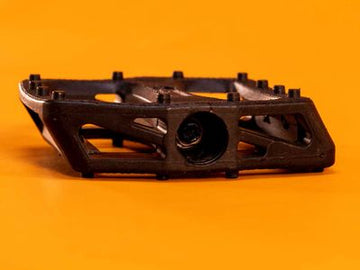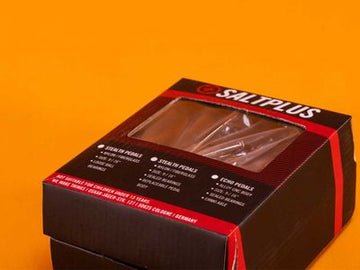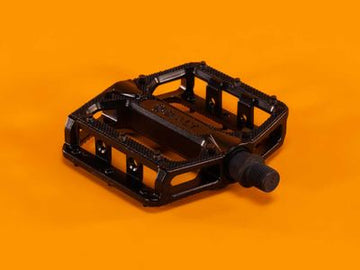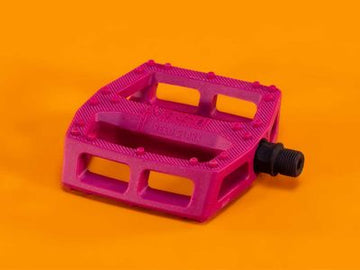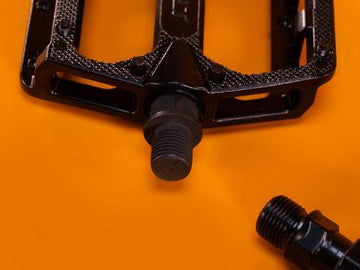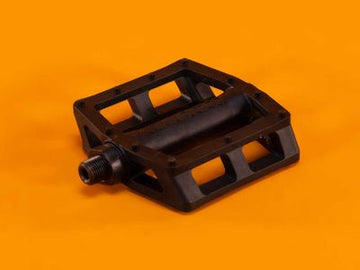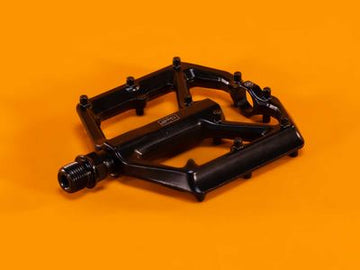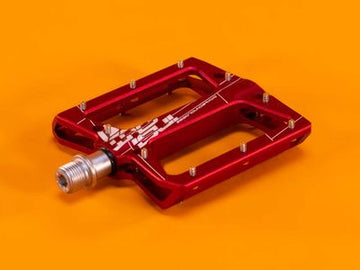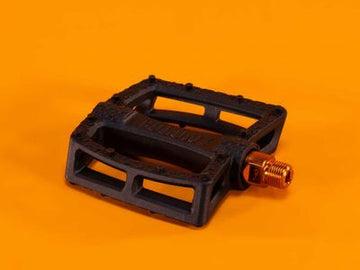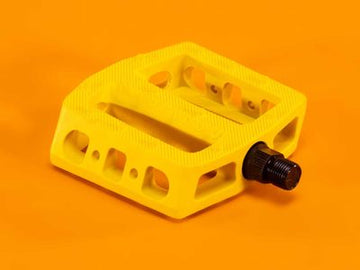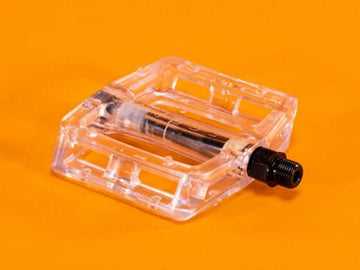BMX Pedals Buyers Guide
Don't slip! Get the right pedals for your bike.
The pedals and grips are the two things that connect you to your bike, so you could say the type of pedal you choose is a pretty important part of the bike. The size of the platform, the material, the mechanism, the brand and the price are all points you should think about before buying your next set of pedals. This guide is aimed to get you thinking about your next set of pedals when it comes time to upgrade.
Step
01.
Plastic vs Alloy
When it comes to buying pedals for your BMX bike you might be thinking where do I start? With brands including Odyssey, Cult, or Eclat the first question when buying pedals to answer is which is better? Plastic or Alloy? Both Alloy and Plastic versions of BMX pedals offer different characteristics and performance.
Step
02.
Sealed VS Loose Ball Bearings
The next consideration to make when choosing a set of pedals for your bike is will they be sealed or loose ball bearing. Since the early 2000’s BMX riders have had a choice of pedals being sealed or loose ball. This refers to the type of bearing, that the pedal uses to spin freely. Sealed ball bearings offer a more solid design since the bearings are enclosed in a metal case. Loose ball bearing systems are cheaper but offer a...
Step
03.
½ inch VS 9/16 Inch
Pedals for BMX bikes generally come in two different spindle sizes for different types of cranks. 9/16’s of an inch is a thicker spindle for three-piece cranks. These are the majority of pedals that BMX riders ride. ½ inch pedal spindles are made for 1 piece cranks, these pedals are for the more old and mid school builds since once piece cranks are used for freestyle BMX anymore. When choosing your pedals, the spindle size will be the first choice...
Step
04.
Platform
Pedals come in all shapes and sizes. For the park/ramp riders extremely thin, lightweight alloy pedals are more popular. Offering a wide platform for maximum foot space when landing those flip whips over the box. For the street riders, the platform should be slightly thicker to handle the hits from the streets, those rough brick ledges and all the luc-e’s you’ll be doing. A thicker platform is subsequently heavier however it offers a more durable longer-lasting pedal platform.
Step
05.
Price
Pedals range between $25 dollars for the cheaper plastic pedal to $170 for the thinner, sealed alloy pedals. Regardless of your choice of the pedal, it’s important that you choose a pedal that suits your style of riding and not just to follow the trend of the coolest pedal of the week.

